Interiors
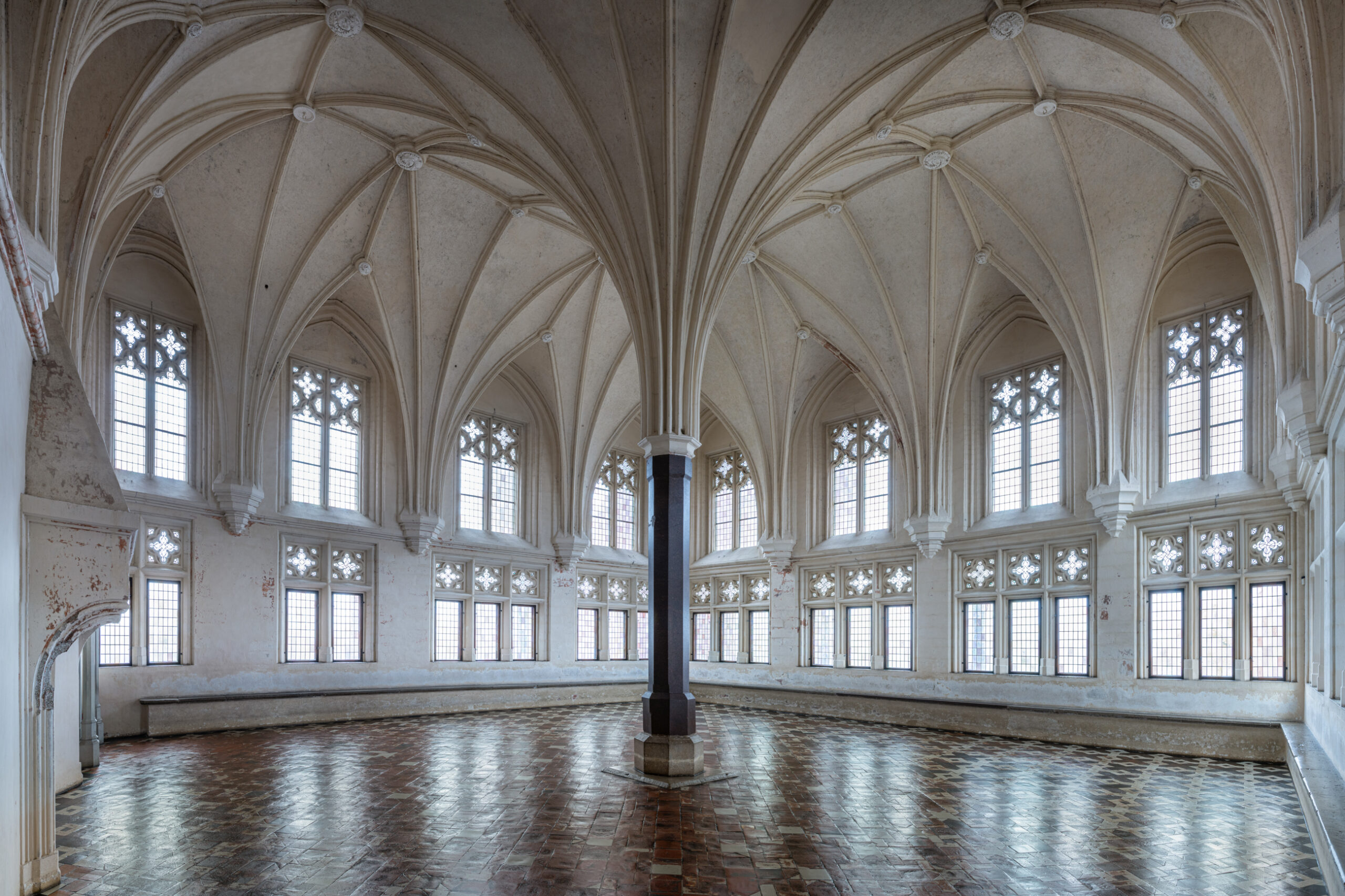
Summer Refectory
Summer Refectory The neo-Gothic portal leads from the Winter Refectory to the Summer Refectory – the most magnificent hall of the Palace. The architecture of this interior, important mainly due to the innovative radial vault supported on one central pillar, is one of the top achievements of art not only in the Teutonic state. In […]
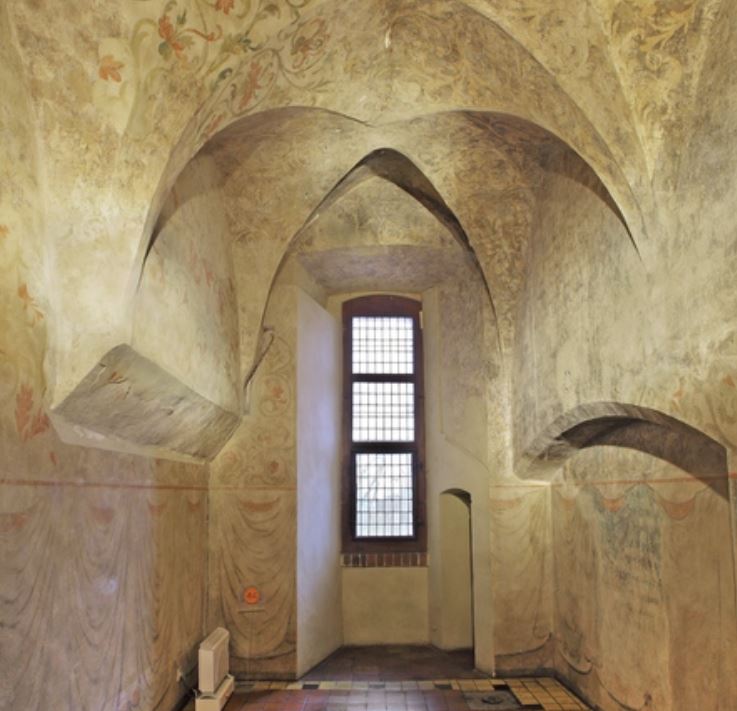
Bedroom
Bedroom A small room interpreted as a bedroom of great masters. Opposite is an even smaller room, considered to be the room for the master’s companion – his closest confidant. The bedroom was of course equipped with a warm air heating system. In the Middle Ages it was richly polychrome, the remains of the painting […]
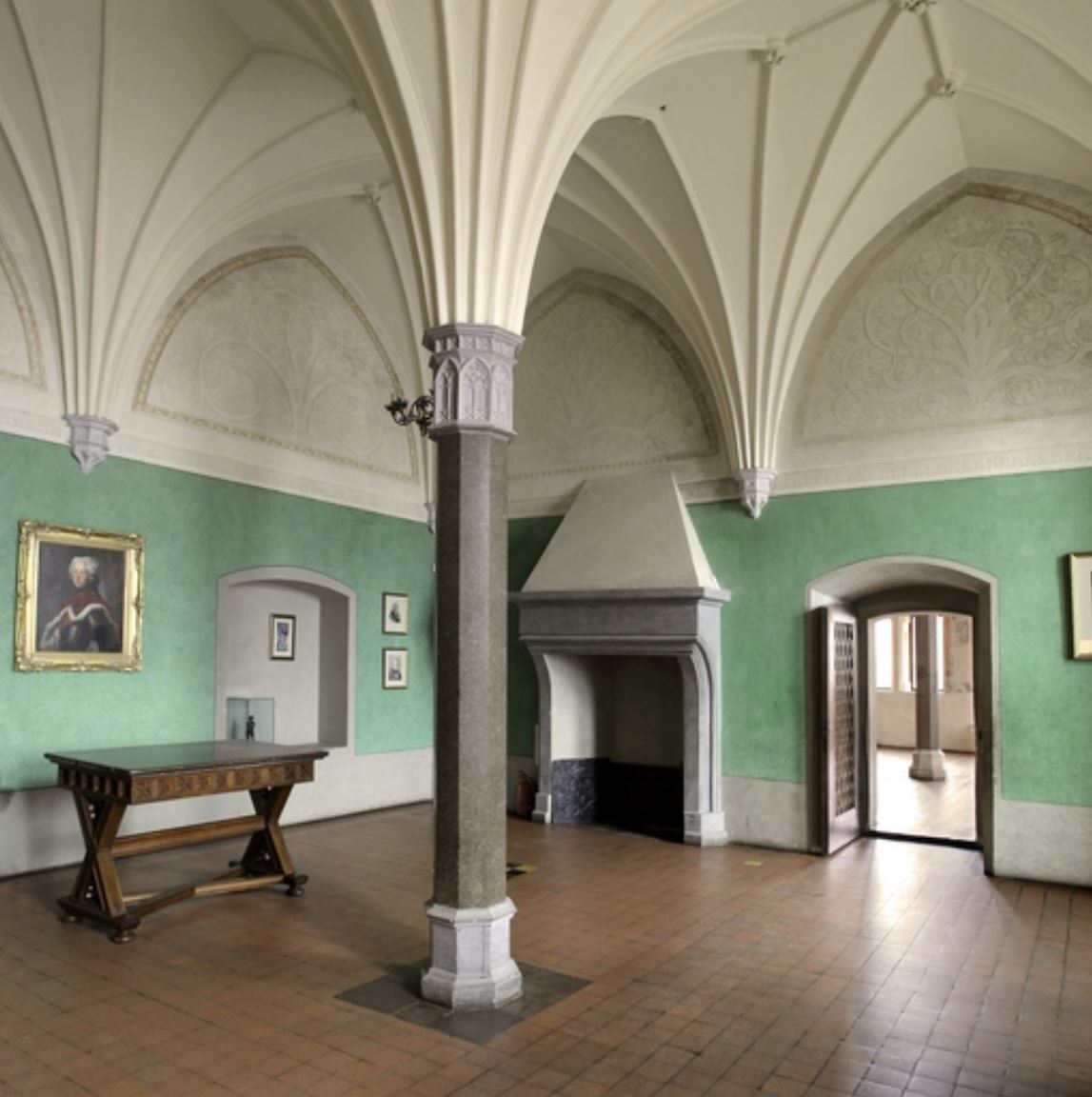
Królewiecka Hall
Królewiecka Hall In the Middle Ages, there were two elongated rooms in this place, each illuminated by one window – mentioned in the Teutonic accounting books: the master’s room and room. Recent studies have shown that the interiors were decorated with wall paintings in the form of plant flagella – a fragment of this old […]
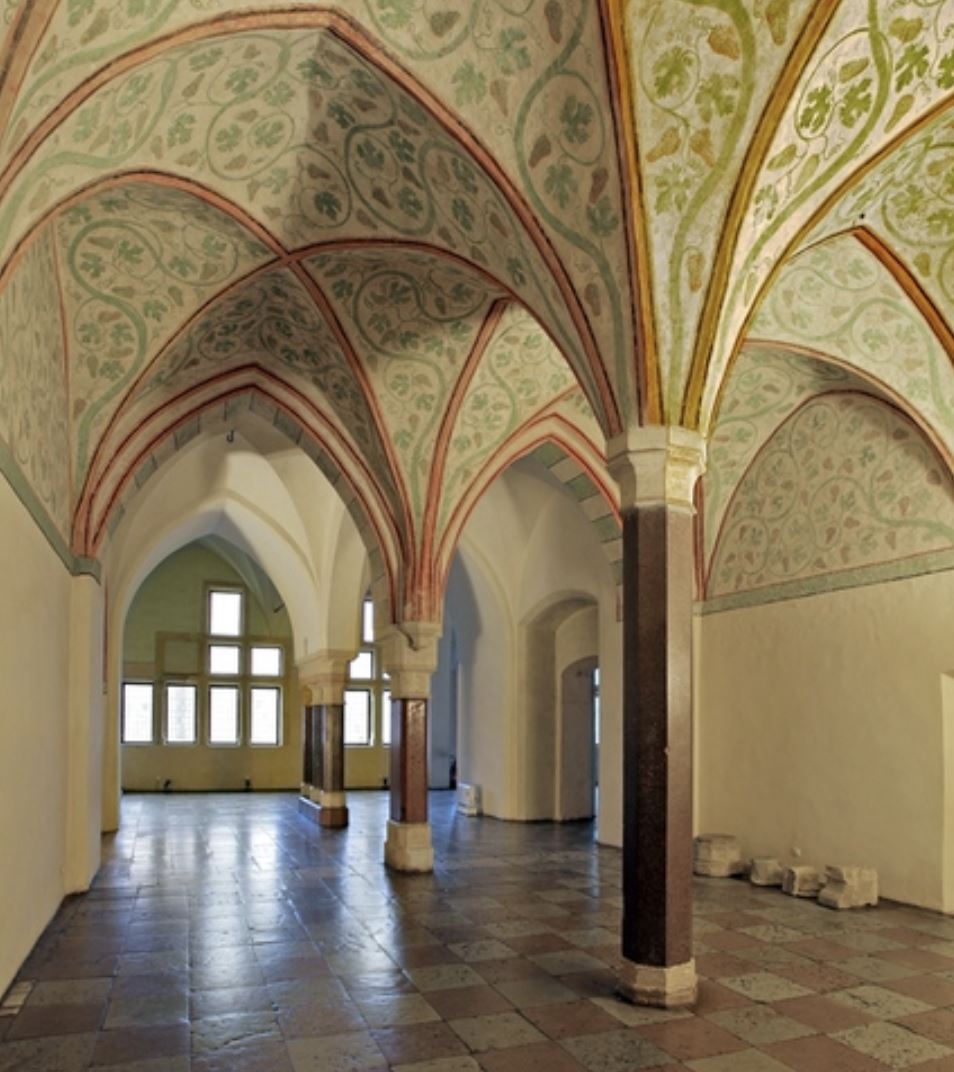
Low entrance hall and entrance hall
Low entrance hall and entrance hall The low entrance hall is the first interior in the representative part of the Palace. The cross vault is decorated here with a beautiful motif of a vine, which in the Middle Ages was the most important among symbolic plants (it was an attribute of Christ, a symbol of […]
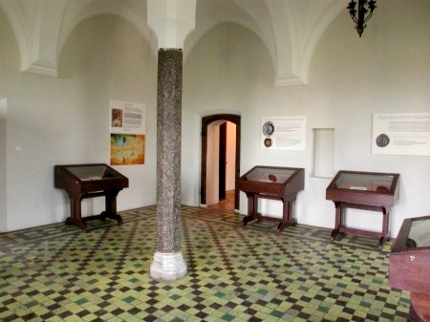
Chancellery of great masters
Chancellery of great masters On the ground floor of the west wing, to which a separate entrance led from the courtyard, there was the archive and the chancellery of the Order – one of the most important Teutonic offices. The chancellor of the great masters was at the head of the office. Perhaps there was […]
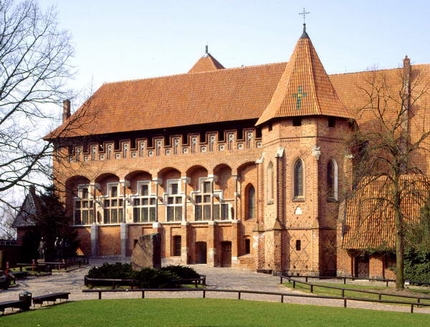
Palace of the Grand Masters
Palace of the Grand Masters Within the western wing of the Middle Castle there is a unique building – the Palace of the Grand Masters, erected at the end of the 14th century, i.e. at the peak of the development of the monastic state in Prussia. It is the most architecturally rich and artistically valuable […]
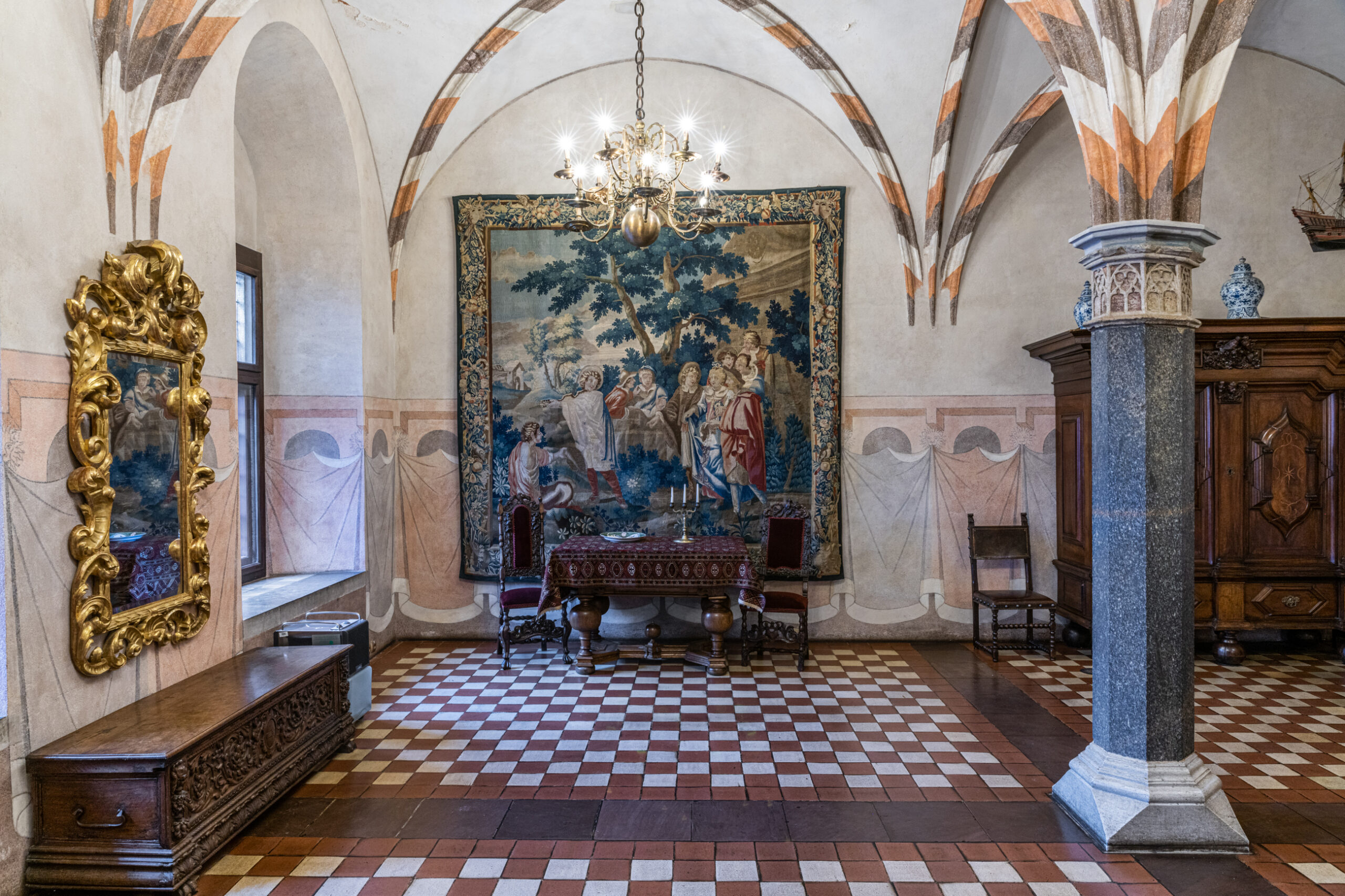
Infirmary
Infirmary Infirmary In the Middle Ages there was a castle hospital here, the present arrangement refers to the Polish period, when the interiors were used as apartments for royal officials. The infirmary, which was in fact a shelter for old and infirm knights who lived their days, had its own refectory, chapel and bathhouse. The […]
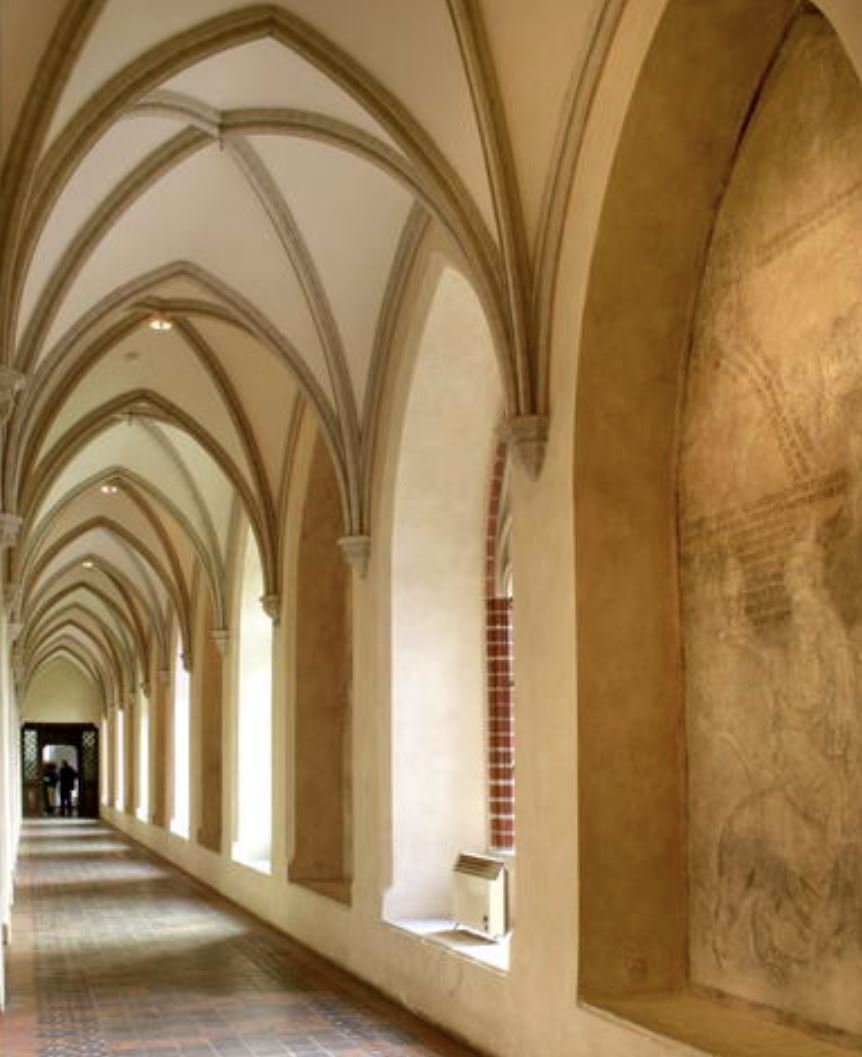
Passage with the Apocalypse
Passage with the Apocalypse Along the eastern wing of the Middle Castle there is a picturesque cloister, where in seven pointed recesses, between the windows overlooking the courtyard, there are paintings with scenes taken from the Apocalypse of St. John. The future history of the world and the ultimate triumph of the Church are described […]
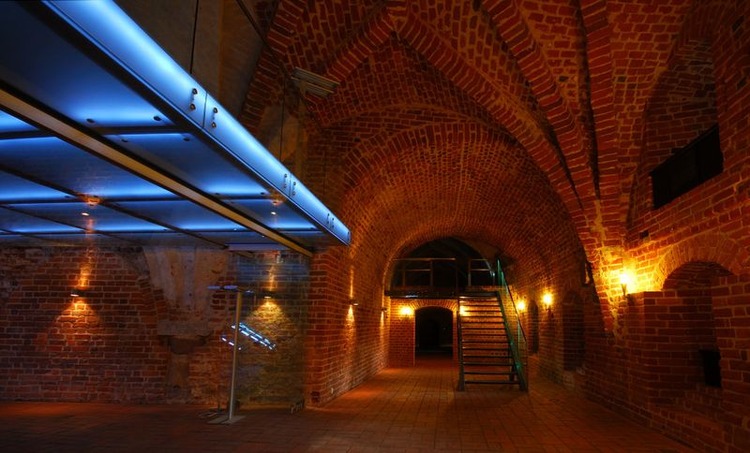
The ground floor of the east wing
The ground floor of the east wing The cellars under the Palace of the Grand Masters have been on display for over a dozen years. But the cellar complex under the entire west wing of the Middle Castle was opened recently, in 2009. It can be accessed both by a new staircase in the northern […]
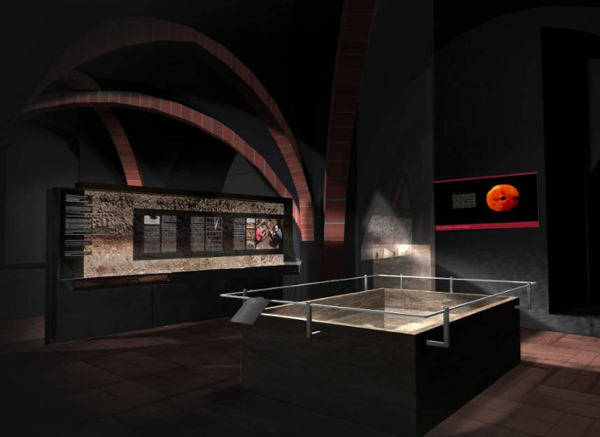
The ground floor of the east wing
The ground floor of the east wing In the basement of the east wing of the Middle Castle there is a permanent amber exhibition entitled: Amber contexts. It is a spacious, low interior covered with a cross vault on the buttresses. In the Middle Ages it served as a warehouse. Baltic amber is a resin […]
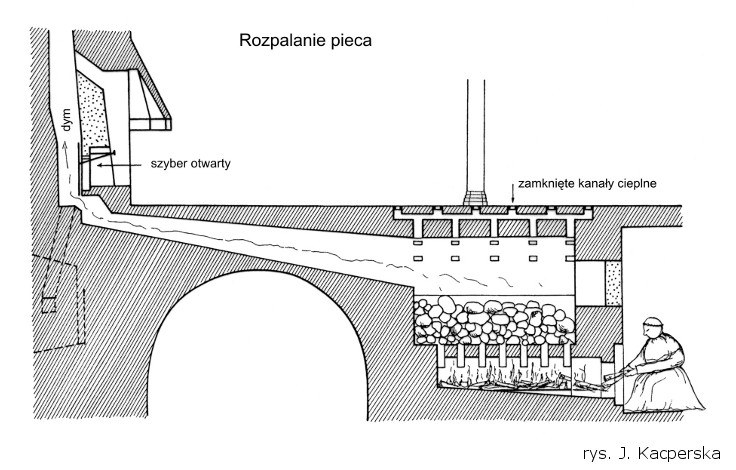
Medieval heating system of the Malbork Castle
Medieval heating system of the Malbork Castle Of all the heating devices that used to be in the castle, the greatest interest was aroused and still aroused by medieval furnaces that heat the chambers with the heat accumulated in the stones gathered above the hearth, and then radiated through channels with an outlet in the […]
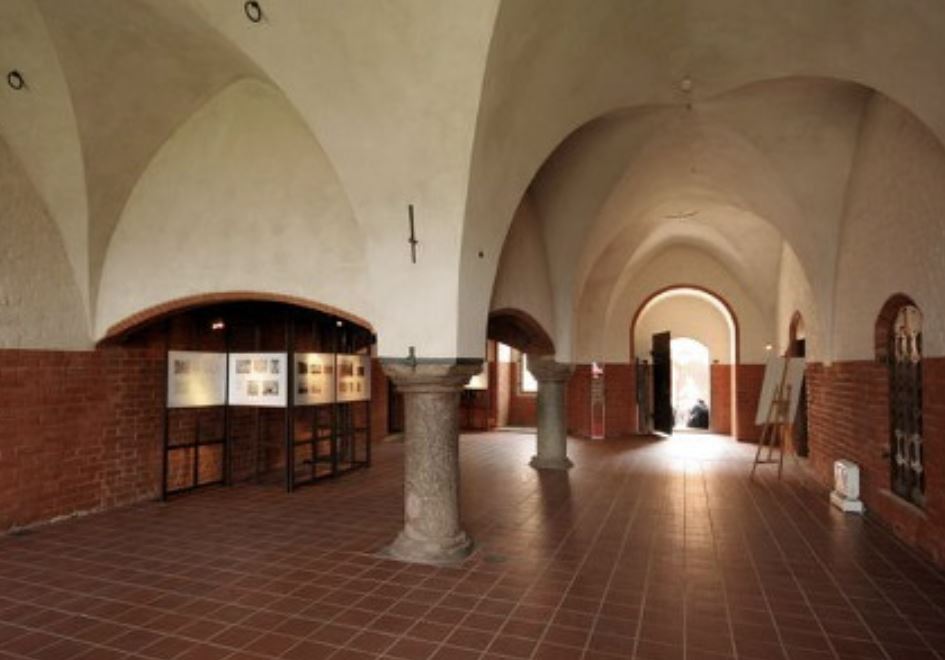
Kitchen and Chef’s Chamber
Kitchen and Chef’s Chamber The dishes intended for the tables of the Great Refectory were prepared in a kitchen adjacent to it on the north side, the most important element of which was a large hearth covered with a huge chimney hood. Next to the kitchen there was a small cook’s room and a utility […]
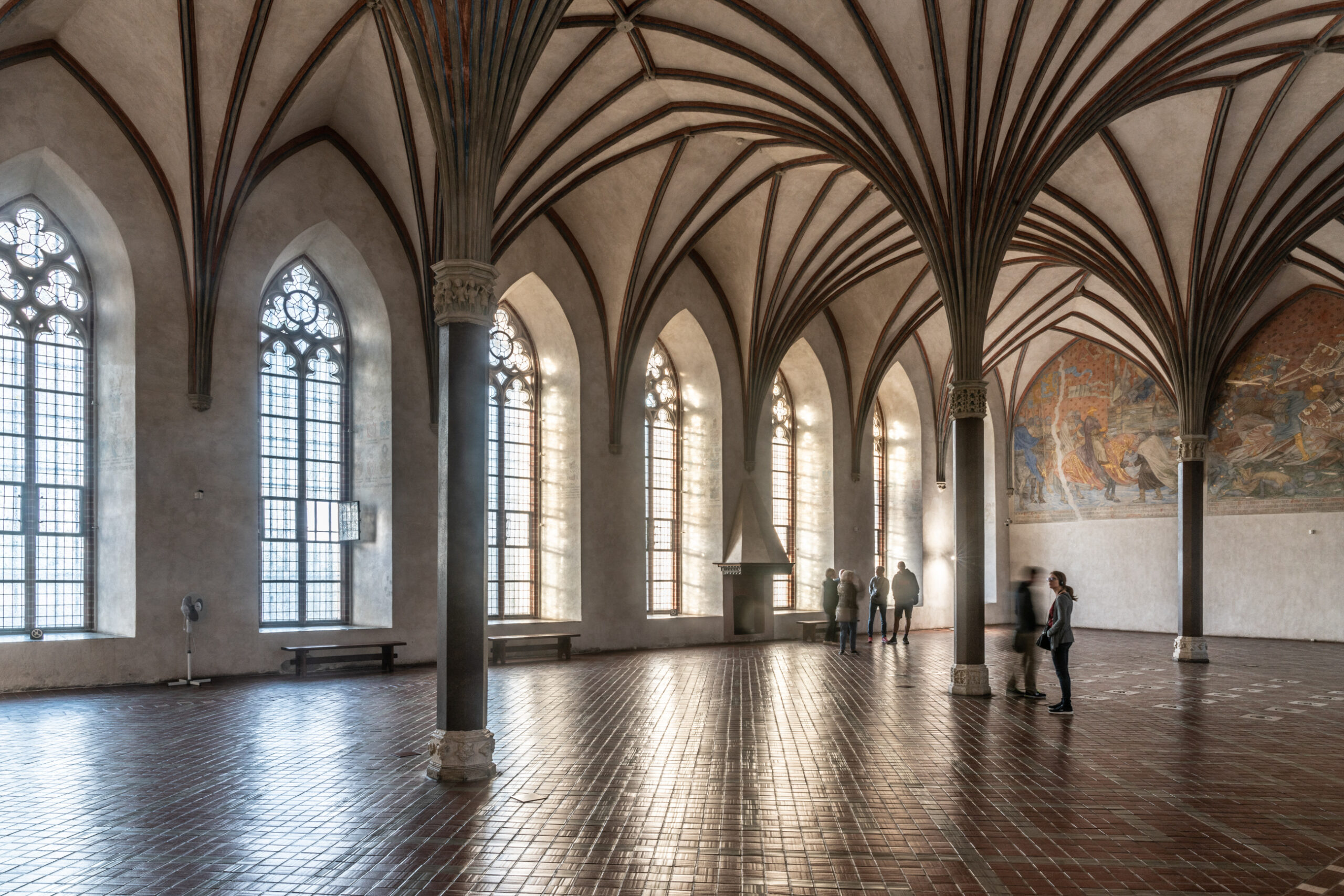
Great Refectory
Great Refectory In the west wing, the Grand Refectory is adjacent to the Palace of the Grand Masters – the largest and most magnificent interior in the entire secular architecture of the Order. The surprisingly spacious vault, supported on three slender pillars, added to the monumentality of this hall, intended for joint feasts of knights […]
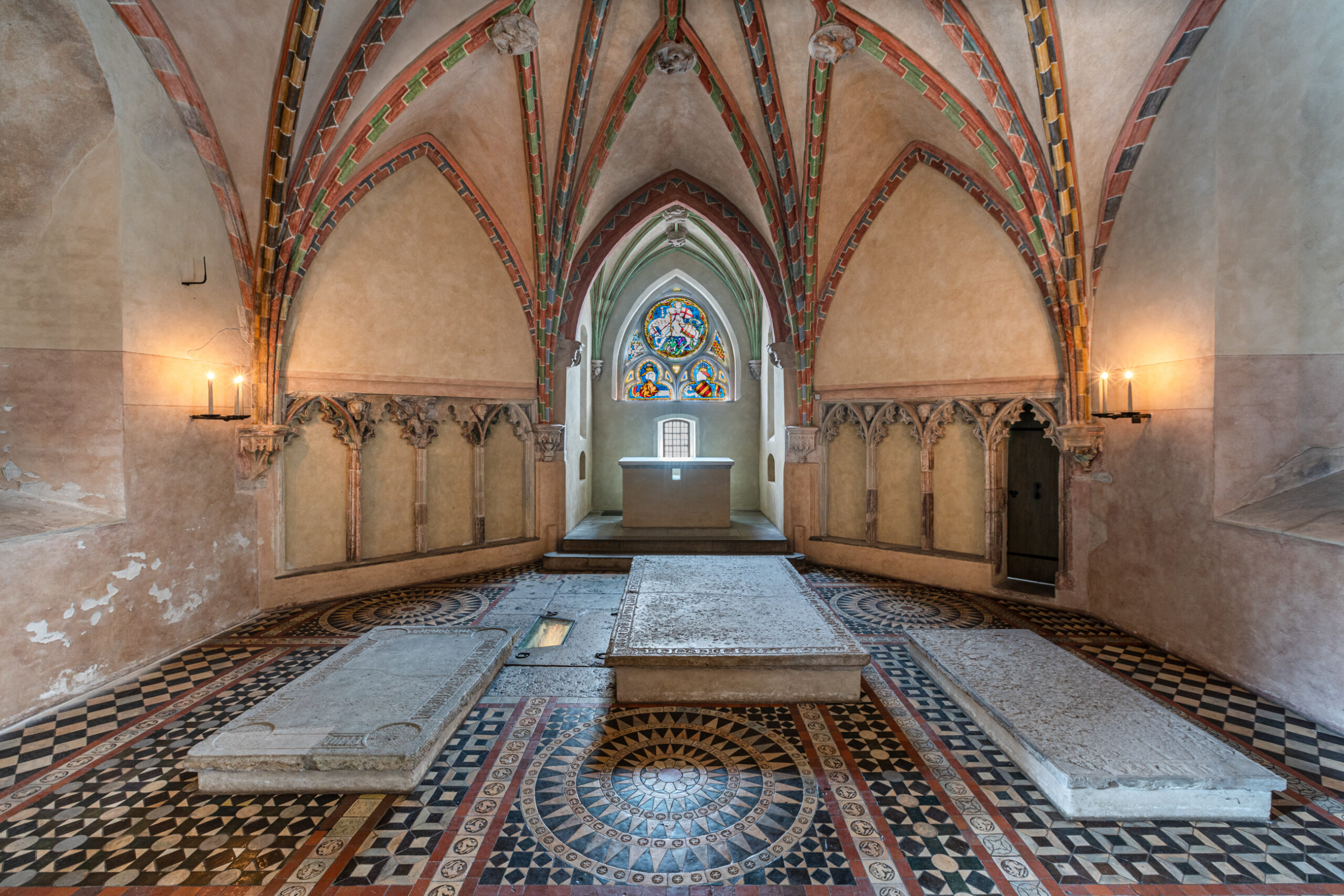
St. Anne’s Chapel
St. Anne’s Chapel The extension of the chancel of the church to the east created a new room under the added part of the building, in the ground floor, which was assigned the function of the funerary chapel of the great masters, giving it the call of Saint Anna. Two entrances led to the interior […]
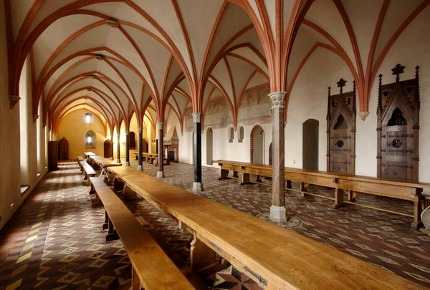
Refectory of the Convention
Refectory of the Convention The second of the most representative interiors of the second floor of the main conventual house. The elongated hall of the refectory, i.e. the dining room, is covered with a simple rib vault supported by seven slender pillars. The original vault was lost during the Prussian reconstruction into a military warehouse, […]
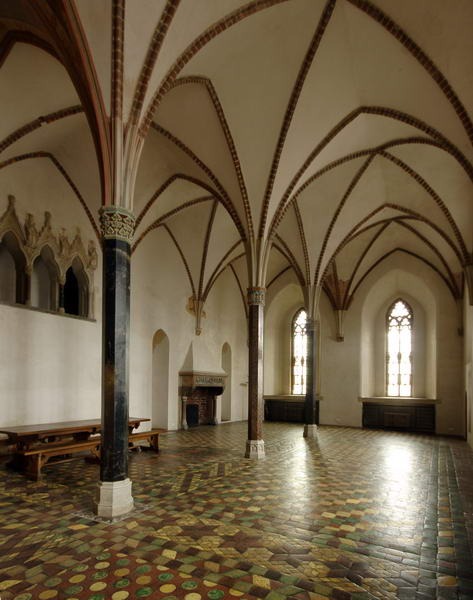
House of the Convention
House of the Convention In the Middle Ages it was a kind of a common room where the knights of the Malbork convent spent their free time listening to music from the gallery – a decorative porch on the north wall. The current interior fittings have been arranged in a similar way to the adjacent […]
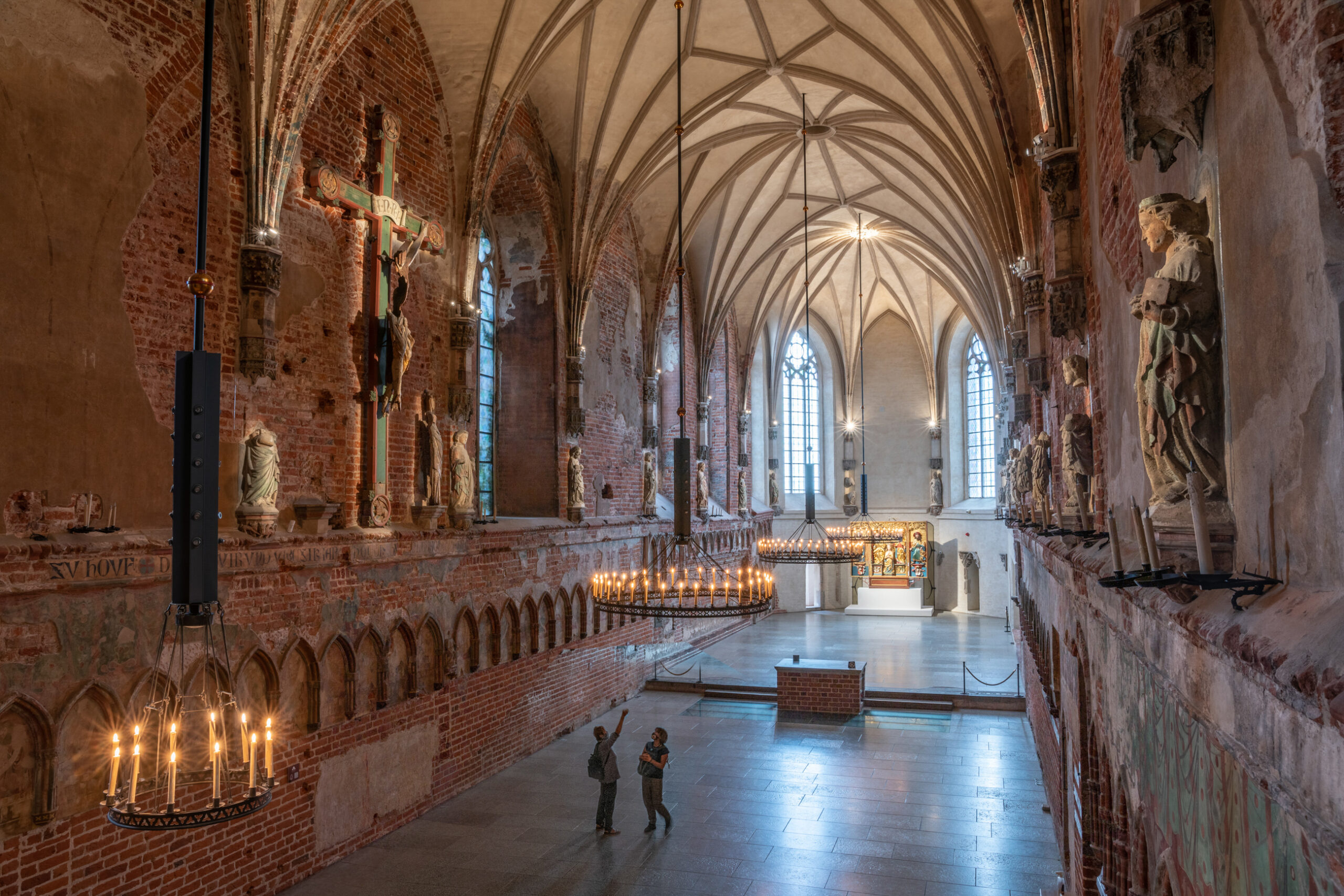
Castle Church of Blessed Virgin Mary
Castle Church of Blessed Virgin Mary The castle chapel existed from the first phase of construction of the castle at the end of the 13th century. Due to the change of function and increasing the importance of the stronghold after the capital of the state was transferred to Malbork in 1309, the chapel occupying only […]
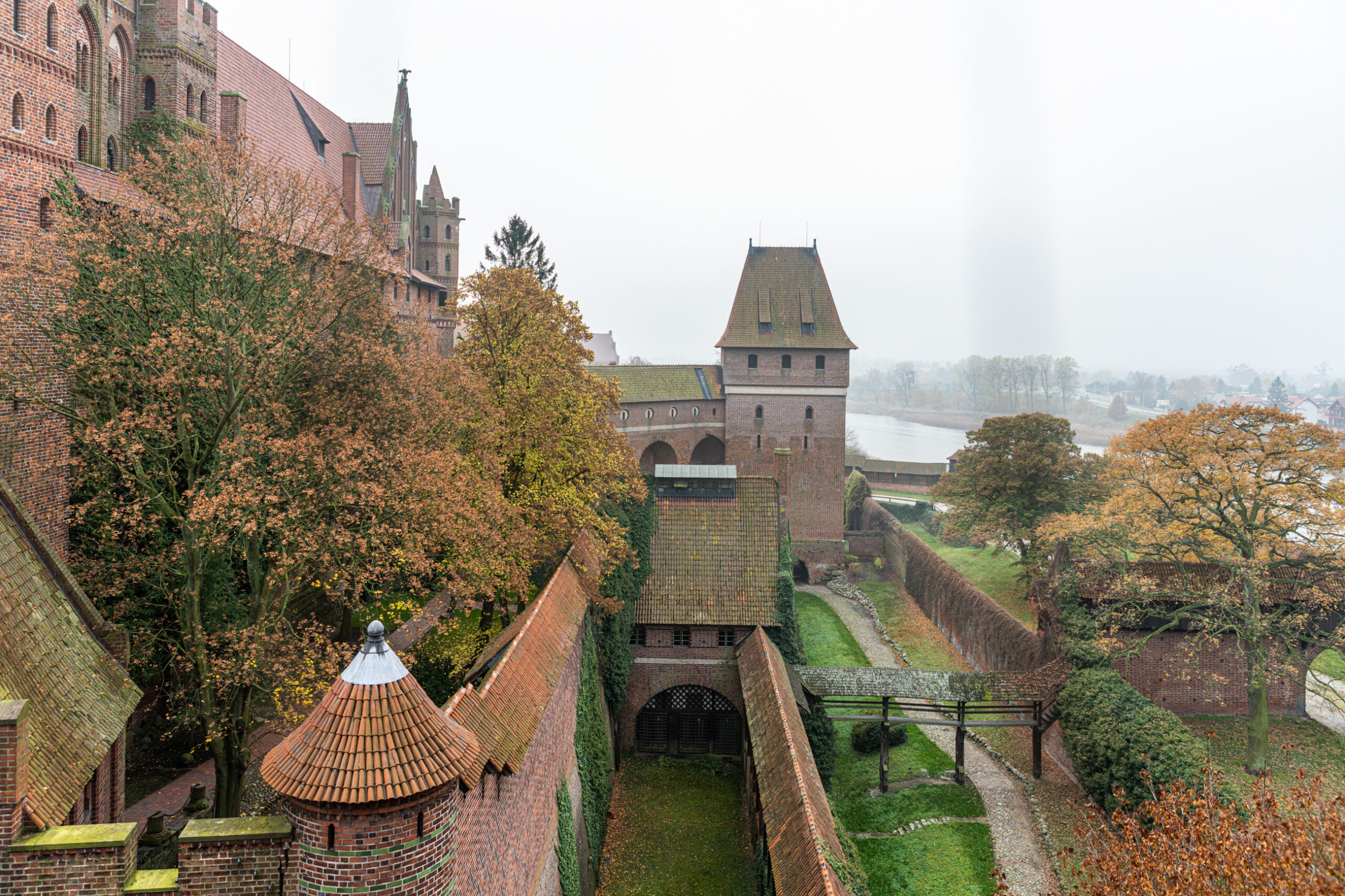
Gdanisko
Gdanisko is a tower that belongs to the oldest castle buildings. In the Middle Ages, it served as the main castle toilet, and if necessary, also as the tower of final defense. It was erected on arcades so that water could flow under it, carrying impurities. The barred opening in the floor highlights the height […]
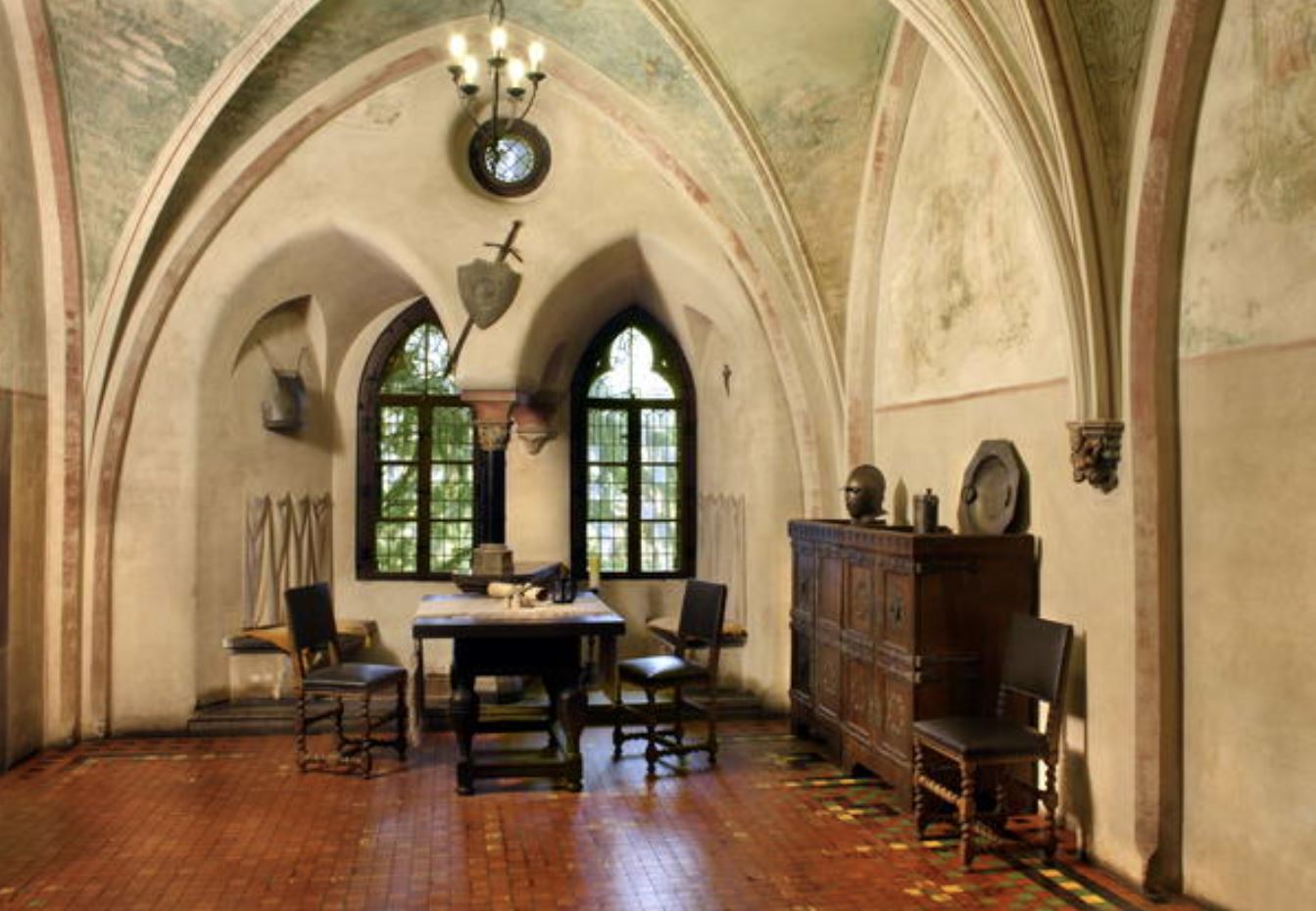
Rooms of dignitaries
Rooms of dignitaries A series of small rooms located on the main floor of the west wing of the High Castle housed successively: on the northern side, the housing complex of the monastic treasurer (treasurer) in charge of the finances, with a vestibule, a room, a treasury (the so-called silver chamber) and a servant room, […]
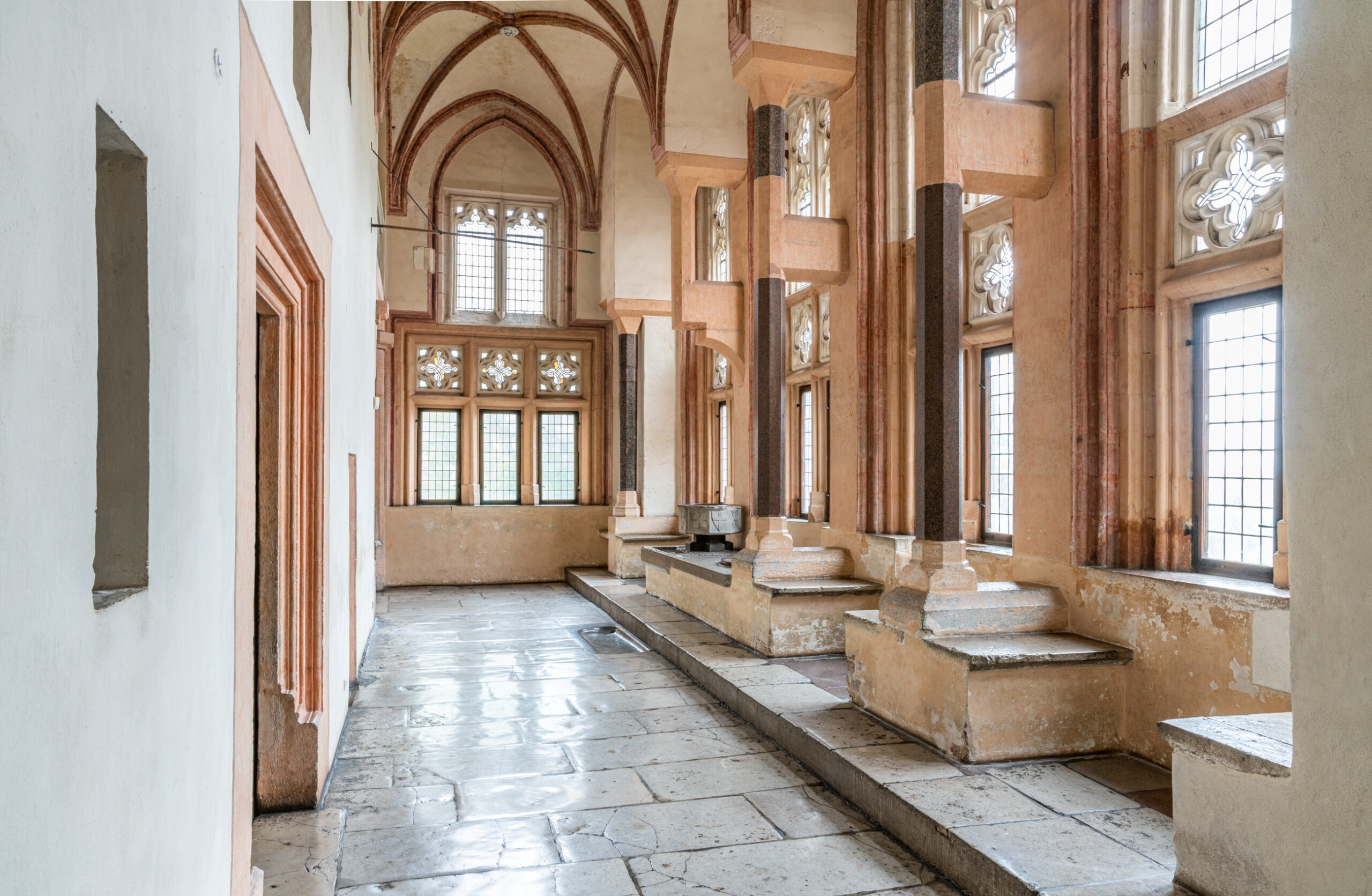
High entrance hall
High entrance hall Brightened with large, rectangular windows, the High Hall provided adequate access to the most representative interiors of the Palace. At the very end of the Vestibule, a magnificent stone portal leads to the Summer Refectory; above it, a musical gallery for heralds was arranged in the thickness of the wall. One of […]
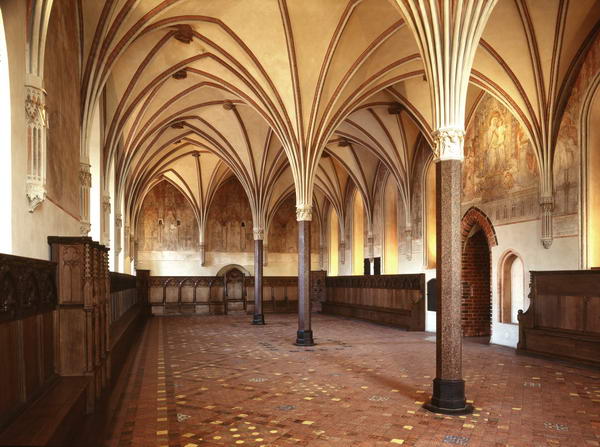
The so-called Chapter House (former Refectory)
Chapter House A decorative portal from the 14th century leads to the so-called Chapter Hall, a vaulted interior that covers almost the entire western half of the north wing. The inscription on the front door was taken from the chapter hall in the castle of the Margat Order in Syria: Sit tibi copia, Sit sapientia […]
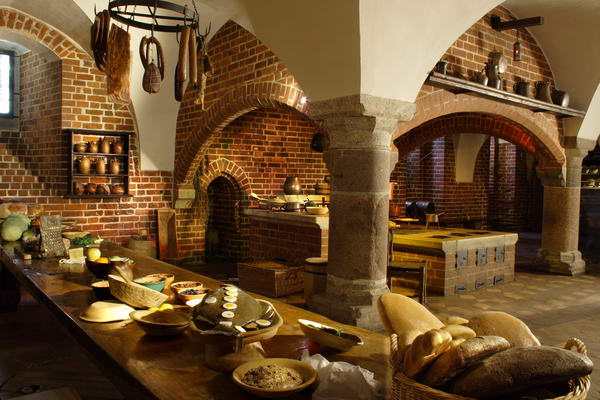
Convent kitchen
Convent kitchen Under the arcades in the ground floor of the western cloister, elements of the old mill equipment are displayed, and behind them, wide doors lead to the kitchen of the Malbork convent. In the first interior, with a large hood covering the hearth, dishes were once prepared, transported by an elevator by the […]
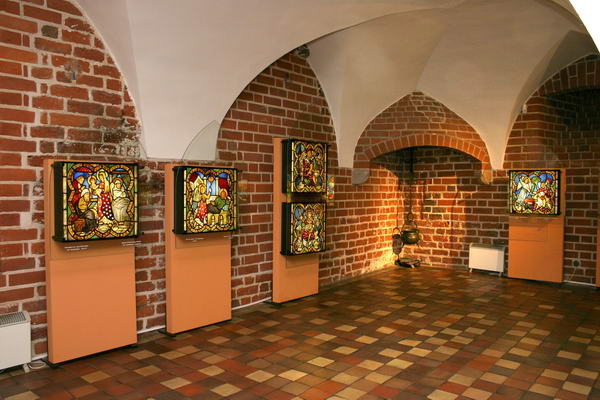
Corner room
Corner room In the Middle Ages, it was a utility room – probably one of the food warehouses. Today, the interior serves as an exhibition hall, where you can see an exhibition of stained glass. Stained glass glazing was one of the most important elements of the interior design of old buildings, including, of course, […]
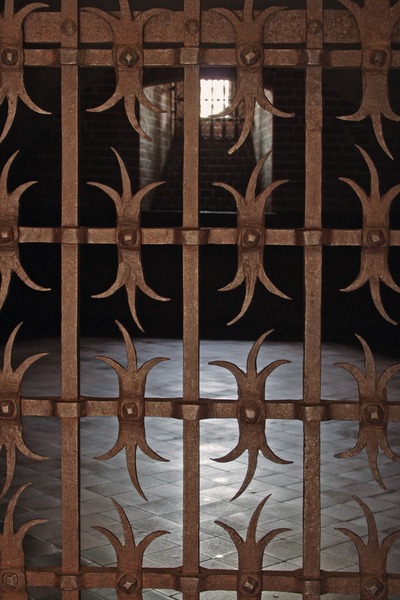
Witold’s cell
Witold’s cell In the Middle Ages, the dark interior served as a prison for special prisoners of war – traditionally it is called Vytautas’ cell, although the Grand Duke of Lithuania never visited it. In 1361, the Lithuanian prince Kiejstut was kept here. The legend tells about his escape from the cell in which a […]
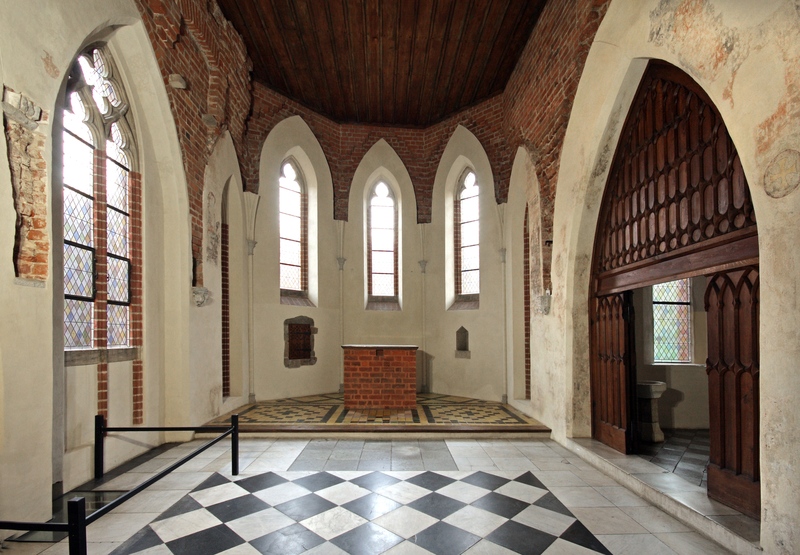
Chapel of the Grand Masters
The Grand Masters Chapel A private chapel of the highest dignitaries of the Order, known traditionally under the invocation of St. Catherine. A room in the eastern part of the Palace, with a polygonal presbytery, whose external body protrudes significantly beyond the line of the Palace façade into the courtyard. In the Middle Ages, it […]
Tickets
Buy tickets online
Opening Hours
- Mon:9:00 - 16:00
Exhibitions
- Tue - Sun:9:00 - 15:00
Contact
Tourist Information
- +48 55 647 08 00
- +48 55 647 09 02
- +48 55 647 09 78